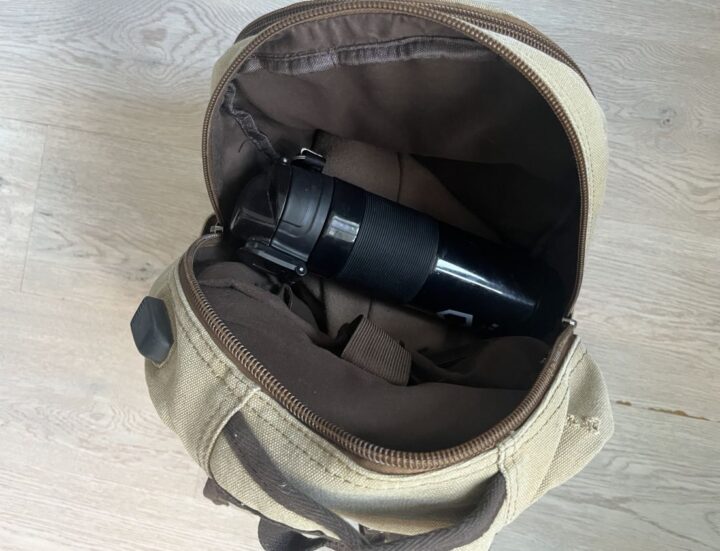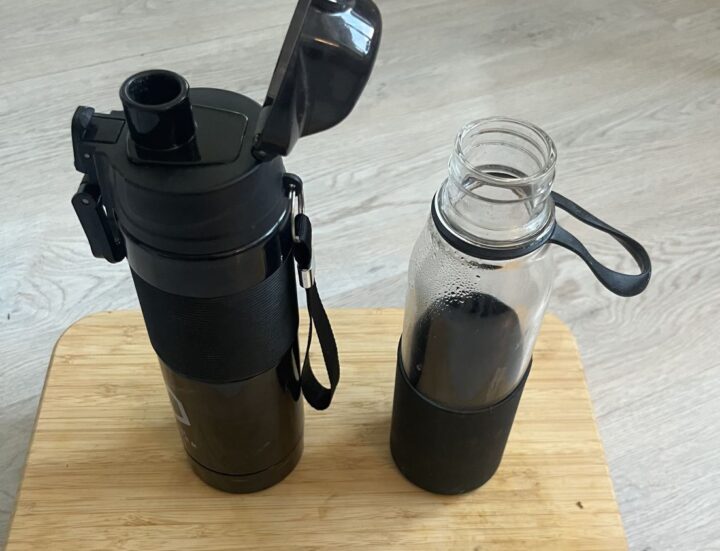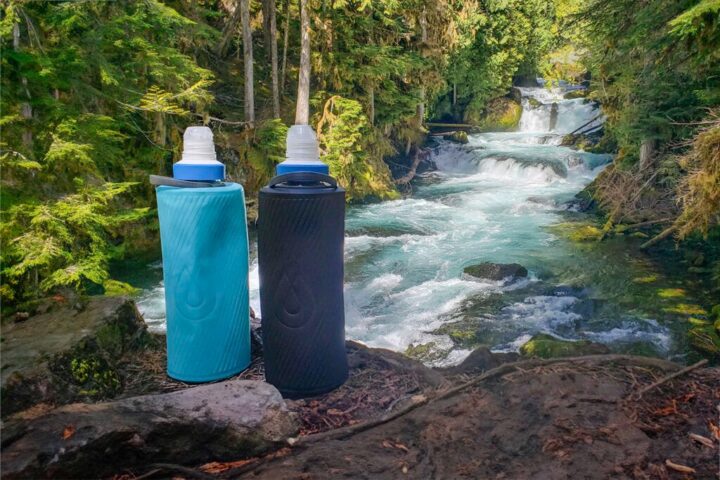Hiking gear has a funny way of teaching you lessons when you least expect it. Most people worry about boots, packs, or socks. I used to be the same.
Then one summer I packed a cheap bottle for a hot loop near Canyonlands.
It leaked inside my pack by mile two, soaked my extra layer, warmed up fast, and turned the last climb into a slow, slightly miserable grind.
Since then, I have tested multiple bottles across real trail conditions and put together a full breakdown of the best hiking water bottles I have tested for different types of hikers.
That was the day I realized something simple.
A water bottle sounds basic, but once you get it wrong, the hike gets worse fast.
Over the last few months I have tested different bottles across about forty miles of trail.
Some were popular models everyone recommends. Some were budget picks.
Some were bottles I already owned and trusted. A few surprised me in really good ways. A few failed so badly they ended up in the recycling bin.
This is everything I learned from real hikes, not marketing claims.
How I tested each bottle
I wanted my tests to reflect normal use. Nothing fancy. No controlled environments. Just real hikes where I needed the bottle to work without thinking about it.
Here is the simple test protocol I used:

1. Sideways leak test
All bottles were placed sideways in my pack for the entire hike. If even a drop leaked, that bottle failed.
2. One handed drinking while walking
If the bottle made me stop every time I needed a sip, it was a mark against it.
Hydration needs to be simple and automatic.
According to the National Park Service, early and steady hydration helps prevent fatigue and cramps, so ease of access actually matters more than people think.

3. Drop test
Each bottle got one controlled drop on a rocky section of trail. Nothing extreme, just simulating what happens when you take your pack off carelessly.
4. All day temperature test
Insulated bottles were left in direct sun. Non insulated bottles were carried normally. I did not measure with instruments, but the difference in taste and temperature was noticeable.
These four simple tests told me more than any lab spec sheet.
Five features that matter more than hikers realize
1. Leak resistance is the number one priority
I cannot stress this enough. You can forgive a lot of flaws in a bottle, but you cannot forgive a leak. A leaking bottle soaks your spare clothing, ruins snacks, and wastes the one thing you absolutely need on the trail.
Bottles with poor threading or soft gaskets were the first to fail.
The surprising thing is that price did not always predict performance.
Leak resistance is worth paying for.

2. Lid design changes your hydration habits
I did not expect this.
The lid is the piece of hardware that controls how much you drink, how often, and how comfortably.
During tests, I noticed:
- Flip caps helped me drink more naturally
- Wide mouth bottles were great for filling but awkward to drink mid stride
- Straw lids encouraged frequent sipping but were harder to clean
There is no perfect lid for everyone. What matters is matching the lid to the type of hiker you are.
3. Insulation matters only on the right days
On cool forest hikes, insulation does almost nothing.
On hot dusty climbs, it is a complete game changer.
When water stays cold, I drink more often.
On long ascents, that meant steadier pacing and less fatigue.
Cold water has a psychological boost too.

4. Grip and shape affect safety more than style
I always knew grip mattered, but I did not realize how much until I dropped a smooth stainless steel bottle onto a sloped granite slab.
Watching it bounce away while I scrambled to grab it was a good reminder that real gear is first and foremost about control.
Textured bottles or bottles with slight contouring feel safer, especially when hands are sweaty or dusty.
5. Durability is more important than weight
I used to think durability was something you paid for when you were a backpacker, not a day hiker.
That is wrong.
A cracked bottle or a broken cap can cut a hike short. You do not need to carry a tank, but the bottle should survive at least one drop. Trail conditions are unpredictable. Gear should not be fragile.
What about BPA, plastics, and material safety?

A lot of hikers still worry about BPA, and for good reason. Older plastic bottles sometimes leached chemicals when exposed to heat. The good news is that almost all modern hiking bottles are BPA-free, and the reputable brands clearly label this.
Here’s the quick breakdown:
- BPA-free plastic bottles are lightweight, cheap, and safe for normal outdoor use.
- Stainless steel is naturally BPA-free, durable, and great for insulation.
- Aluminum bottles are lined to prevent metal taste, but cheaper ones can dent easily.
- Soft flasks are safe as long as you buy from real outdoor brands.
The only time I worry about plastic is when it sits in a hot car for days or gets repeatedly scratched inside. If your plastic bottle is cloudy, cracked, or smells odd, replace it. They are cheap and not worth risking.
For the trail, stainless steel or BPA-free plastic are both reliable choices.
Common mistakes hikers make when choosing a bottle
After testing so many bottles in real conditions, I noticed five mistakes beginners make again and again:
- Choosing bottles that are way too heavy
A full liter already weighs enough. A heavy bottle punishes your shoulders. - Buying oversized bottles they will not drink from
Most people do not want to carry 1.5 liters in a single container. - Ignoring lid mechanisms entirely
Lid design matters just as much as the bottle body. - Buying the cheapest bottle and replacing it constantly
Cheap bottles fail in the real world. - Never testing the bottle before hiking
A quick fill and shake at home exposes most problems.
Which types of bottles performed best
Across all tests and hikes, here is what consistently worked:
For hot weather

Insulated stainless steel bottles.
They keep water cool, prevent overheating, and feel better to drink from in harsh sun.
For fast paced day hikes
Lightweight bottles with simple flip caps.
Easy drinking means better hydration consistency.
For new hikers on a budget
Durable plastic bottles with secure threading.
They are lightweight, reliable, and inexpensive to replace..
Final thoughts
A perfect hiking bottle is invisible. It does its job without drawing attention, spilling, breaking, or making you stop every five minutes.
When hydration becomes automatic, your pace stays stronger, your mood stays steady, and the hike simply feels smoother.
If you have never given much thought to your bottle, try testing a few on your next hikes. You will be surprised at how much comfort comes from something so simple.